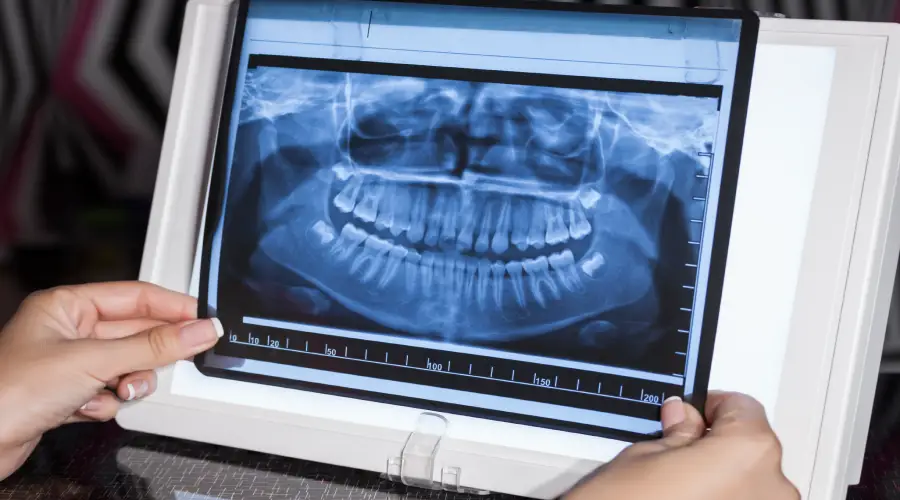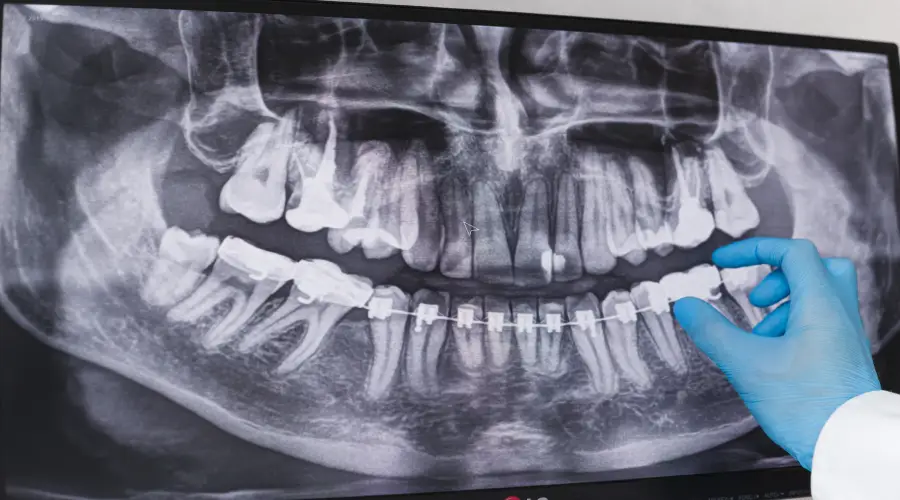Definition
Dental x-radiates are a kind of image of the teeth and mouth. X-radiates are a kind of high-energy electromagnetic radiation. The x-radiates invade the body to approach an image on film or screen. X-bars can be either modernized or made on a film.
Structures that are thick (like silver fillings or metal remaking) will obstruct most of the light energy from the x-shaft. In Dental Treatment this makes them appear to be white in the image. Structures that contain air will be dim and teeth, tissue, and fluid will appear as shades of faint.
Elective Names
X-bar - teeth; Radiograph - dental; Bitewings; Periapical film; Widely inclusive film; Cephalometric x-bar; High-level picture

How the Test is Performed
The test is acted in the dental expert's office. There are many kinds of dental x-radiates. Some of them are:
Bitewing. Shows the crown portions of the top and base teeth together when the singular bites on a chewing tab.
Periapical. Shows 1 or 2 complete teeth from the crown to the root.
Palatal (in like manner called occlusal). Gets all the upper or lower teeth in a solitary shot while the film lays on the biting surface of the teeth.
Comprehensive. Requires an excellent machine that pivots the head. The x-pillar gets the jaws in general and the teeth in a solitary shot. It is used to plan treatment for dental supplements, check for impacted insight teeth, and distinguish jaw issues. A comprehensive x-pillar isn't the best method for perceiving depressions, aside from assuming that the decay is incredibly front-line and significant.
Cephalometric
Presents the side viewpoint on the face and addresses the relationship of the jaw to each other too in regards to different plans. Diagnosing any aeronautics course issues is valuable.
Various dental experts are moreover taking x-radiates using progressed advancement. These photos go through a PC. How much radiation is produced during the framework isn't precisely a regular strategy. Various types of dental x-pillars can make a three-layered picture of the jaw. Cone bar motorized tomography (CBCT) may be used before a dental operation, for instance, when a couple of supplements are being set.
Step-by-step instructions to Get ready for the Test
The test is acted in the dental expert's office. There is no unprecedented course of action. You need to dispose of any metal things in the space of the x-bar receptiveness. A lead cover may be set over your body. Inform your dental expert as to whether you might be pregnant.
How the Test will Feel
The x-pillar itself causes no trouble. Biting on the piece of the film makes specific people gag. Slow, significant breathing through the nose commonly lightens this tendency. Both CBCT and cephalometric x-pillar require no biting pieces.
Dental X-beams (radiographs) are pictures of your teeth that your dental specialist uses to assess your oral well-being. These X-beams are utilized with low degrees of radiation to catch pictures of the inside of your teeth and gums. This can assist your dental specialist with distinguishing issues, similar to pits, tooth rot, and affected teeth.
Dental X-beams might appear to be intricate, however, they're entirely normal instruments that are similarly basically as significant as your teeth cleanings.
Why dental X-beams are performed
Dental X-radiates are routinely performed yearly. They can happen all the more routinely in case your dental expert is following the progression of a dental issue or treatment.
Factors affecting how every now and again get dental X-pillars could include:
● your age
● your continuous oral prosperity
● any symptoms of oral sickness
● a past loaded up with gum contamination (gum infection) or tooth decay
● Accepting at least for now that you're another patient, you'll probably go through dental X-radiates so your new dental expert can get an obvious picture of your dental prosperity. This is especially huge if you have no X-radiates from your past dental-trained professional.

Children could have dental X-radiates more of the time than adults considering the way that their dental experts could need to screen the improvement of their adult teeth. This is critical considering the way that it can help the dental expert with concluding whether a kid's teeth ought to be pulled to thwart disarray, for instance, grown-up teeth filling in behind a youngster's teeth.
Dental X-rays
Dental X-beams can detect inconvenience from the beginning in your mouth, teeth, gums, and jaw. Treating issues before they get serious can set aside cash, torment, and at times even your life.
● Arrangements and ACCESS
● Reach US
What are dental X-rays and why are they needed?
In the rundown of your #1 things, getting an X-beam at the dental specialist's office may not rank high. Wearing that weighty cover and holding an occasionally awkward gadget between your teeth for even a couple of moments isn't a lot of tomfooleries.
In any case, X-beams show dental suppliers a ton. X-beams assist them with seeing the state of your teeth, roots, jaw position, and facial bone creation. They likewise help them find and treat dental issues right off the bat in their turn of events and furthermore with the assistance of Teeth Whitening in Los Angeles.
X-beams are a type of energy that can go through or be consumed by strong items. This energy is consumed by thick articles, like teeth and bones, and appears in X-beams as light-hued regions. X-beams go through less thick items, like gums and cheeks, and show up as dim regions on X-beam film.
X-beams can assist with finding issues that shouldn't be visible with an oral test. Finding and treating issues from the get-go in their improvement might set aside your cash, keep away from uneasiness (on the off chance that these issues are treated sometime in the future), and potentially even save your life.
What types of problems do X-rays help detect?
X-beams assist your dental specialist with diagnosing issues in your teeth and jaws.
In grown-ups, X-beams show:
● Rot, particularly little areas of rot between teeth.
● Rot underneath existing fillings.
● Bone misfortune in the jaw.
● Changes in the bone or root trench because of contamination.
● Condition and position of teeth to help plan for tooth inserts, supports, false teeth, or other dental strategies.
● Abscesses (contamination at the foundation of a tooth or between the gum and a tooth).
● Growths and a few kinds of cancers.
In youngsters, X-beams decide:
● Assuming that rot is creating.
● Assuming that there is sufficient room in the mouth to fit every single approaching tooth.
● Assuming thinking teeth are creating.
● Assuming that teeth are affected (incapable to arise through the gums).

